 The early 1990’s were an overtly awful time for supercar manufacturers, especially those with little history or prestige behind their names. Our market today is strongly fuelled with a vast amount of "specialty" manufacturers such as Pagani, Koenigsegg, Ascari and Wiesmann, but the supercar market back than was mainly driven by well-established auto firms such as Porsche and Ferrari.
The early 1990’s were an overtly awful time for supercar manufacturers, especially those with little history or prestige behind their names. Our market today is strongly fuelled with a vast amount of "specialty" manufacturers such as Pagani, Koenigsegg, Ascari and Wiesmann, but the supercar market back than was mainly driven by well-established auto firms such as Porsche and Ferrari.Those who were new to the business, or at least relatively new, were having a hard time at establishing a proper market. Manufacturers such as McLaren Motor-Cars – developer of the awe-inspiring 240mph "F1" - and Jaguar, with their XJ220, soon found out that there was truly little market to be captured. And most, if not all of the companies with little prestige or universal acceptance, had to soon start looking at filing bankruptcy.
In those problematic years: Bugatti went bust in 1993; "Cizeta" producer of the "Cizeta-Moroder V16T" was shutdown in 1994 after a series of issues related to production costs, and even Gerald Wiegert’s "Vector Aeromotive" automobile company had to close shop in the early 90’s due to lack of sufficient funding – though to be fair, they were later resurrected.
And with all of the trouble, some even believed that the 1990’s were the death of the supercar. Myself? Well, it was a little before my time, but ain’t it funny to look back on it these days? Our current high-performance/supercar market resembles a pack of hungry wolves; and it keeps getting more and more competitive.
But out of all of those who suffered the 1990’s supercar-success drought, it’s the fall of a small sports car manufacturer founded in Hildesheim, Germany by one Eberhard Schulz which bothers me the most.
"Isdera" is the company, and they’ve created some of the world’s most interesting and visionary sports cars.
The history behind this evocative company actually harks back to 1969 when company founder, Mr. Schulz, designed a prototype race car – named the "Isdera Erator GTE" - with a tubular frame and a carbon fibre chassis. The name "Isdera" standing for an acronym of various words: I for "Ingenieurbuero" (German for engineering) S for Styling, D for Design and R, for Racing.

Mercedes-Benz C111
He hadn’t been known for a whole lot up until this point, but when he invented this formula of engineering for a sports car, he hit it big. So big in fact, that in the late sixties, Mr. Schulz was afforded the opportunity to oversee a series of Mercedes-Benz prototypes – starting with the mid-engined, rotary powered "C111". Shortly thereafter, Eberhard joined Porsche in 1971 as a design engineer to primarily to study upon the exterior styling of the companies future vehicles.
In 1978, however, Eberhard with his new-found knowledge and appreciation for sports car engineering, decided that he’d leave Porsche and fullfill his dream to create his very own company. But before he pursued his dream, he spent the remainder of the next five years working closer and closer with Mercedes-Benz. Even still, many of his designs and creative work still hadn’t been presented to the automotive market; and he was unknown to the public, in other words, Eberhard was still very much a design engineer behind the scenes with little appearance and mention in the automotive journalism and what-not.
But Eberhard's hard work was about to pay off. His most well known project design comes from the Mercedes design study referred to the "CW 311". Originally destined with an aerodynamic value of just .311 CW, it was set to be the first true successor to the Rotary Powered C111 of the late sixties. When Schulz presented his final design to Mercedes in 1978, they were so awe-struck with the design that they allowed the car to wear a Mercedes-Benz badge

Problem was, it was to only be seen as a "prototype concept", and not something that Mercedes was going to take the time to actually produce and set loose on the road. Eberhard, obviously proud of his own design and annoyed by Mercedes' choice not to put the vehicle in production, decided that he'd now make "Isdera", a true automotive company with its very own model. And in 1983, Eberhard’s dream came true when Isdera became a both a self-operated & self-owned business.
Tidbit: the eagle in the Isdera's badge is meant to pay homage to the aircraft workshop that the company occupied during it's life time.
Borrowing upon the CW 311's design study, Eberhard was able to slightly redesign the car for road use and ultimately, avoid possible design copyright issues. The company's first car was the "Spyder 036i", and further improving upon his connections with Mercedes-Benz, Eberhard got his hands on a Mercedes' 3.6 litre straight 6 motor -hence the vehicle's name - which powered the 036i. Though arguably, Eberhard's most famous work with his company comes from the car that was released in 1984, the "Imperator 108i". Bearing an even great resemblance to the CW 311, the 108i was an even bigger hit for Schulz - even though just 30 were built.

Employing the same 5.0 litre 8-Cylinder motor from Mercedes-Benz's 500SEC, the 108i had around 350bhp, 320lb-ft of torque and performance figures such as a 176mph (283 km/h)** top speed and a 0-62 mph (0-100km/h) time of just 5.0** seconds dead. For its day, it was incredibly fast, and in all fairness, it's still pretty darn fast by today's standards.


And after a 3 year period of building both the 036i and 108i, Isdera released yet another vehicle - this time, one called the "Imperator 033i Spyder". In all intent and purposes, it was more or less a convertible version of the 108i; same engine, same mechanicals, but still utterly fantastic.
Suffice to say, the 80's were very prosperous for Mr. Schulz. It all looked very bright for Isdera, and while existing models sold at a slow and steady rate, Eberhard had already been spending all of his time and money - somewhere around €4 million - to develop a new car to be released in the 1990's. Eberhard had the idea to make something unique, something truly advanced and sophisticated for it's time. Though it was undoubtedly his most advanced project, it is most probably the reason the company eventually went bankrupt.
But the thing about Eberhard was that he always was a true visionary; not one who liked to sit back and maintain the status quo. For him, the greatest pleasure was gained in creating new design projects; projects that would redefine what we know as sports cars. And in 1993, his newest and undoubtedly most amazing road car was released. And even though this car was all German, it boasted the name "Commendatore 112i", which was actually a tribute to Enzo Ferrari, who had become known as "Commendatore" or "the monk of Maranello" throughout Europe.
Fitting with previous Isdera projects, the C112i was a technical masterpiece; but more specifically, an aerodynamic technical masterpiece.
In terms of its design styling, it's quite obvious that Schulz's C112 owes much to previous Porsche motor cars. If you ask me, the 112i looks to borrow much inspiration from not only Porsche race cars such as the "917", but even such road versions of the late 80's generation of the 911 (the "930").
Tidbit: The headlamps of the 112i are in fact borrowed from that of Porsche's early 90's "968" coupe.


This vehicle in my humble opinion is the pinnacle of his design work. It's a car which was certain to make most any sports car enthusiast's jaw hit the floor. It's very clean and imposing, but aerodynamically efficient; one of the best supercar designs ever as far as I'm concerned. And with a whole host of features like two gullwing engine compartment doors, and an overall extensive use of "green house" glass, the 112i was, and still is quite unlike anything else on the road.
But of course, you can't talk about the 112i without mentioning its great technological advances. It's rear spoiler for instance, automatically adjusted itself to the speed of the vehicle and additionally served a functional purpose as an air brake; the latter of which was unheard of on a road vehicle for the time. Even the suspension was automatically adjustable to speed thus improving both the vehicle's stability and handling at high speeds; all thanks to a velocity-sensitive electronic chassis lowering the car a full three inches.
Tidbit: The C112i shares the same 5-speed Getrag transmission found in the 930-generation 911 Turbo
As for the interior of the vehicle, well, there really isn't one. It's just a collection of hard plastics, with classic square-edged 1990's cabin architecture. Of course, back in the day it was probably the thing, but its interior hasn't aged too gracefully. Yet despite that, I wouldn't have it any other way as it’s truly contemporary to such a car.
And inasmuch as Isdera's component sourcing from Mercedes-Benz had continued to be highly valued, Eberhard had little reason to search elsewhere for an engine to power his new beast. After all, the Mercedes-Benz engines were not only reliable and durable, but powerful and even gave off a bit of prestige to a brand which, even at this point, had very little. Wanting to hasten the C112's advancement into the supercar world, Eberhard got his hands on Mercedes’ latest - at the time – a 6.0 litre, 48 valve, 12-cylinder motor. It was an engine that in this particular stage of tuning was churning out 408PS (402bhp) and some 427lb-ft of torque. Performance figures were as claimed: 0-60 in 4.7 seconds, and a top speed a bar-boasting 205+ mph (330+ km/h). In all honestly though, those performance figures weren't particularly impressive for a 1990's supercar. Though the fact that the 112i was a full 441lbs (200kg) heavier than the 108i didn't help... Anything with a similar price would have knocked it down the hill, but I couldn't care about that either as the allure of this car is not just raw performance numbers.
Tidbit: oddly enough, this exact engine (codenamed the "M120") found its way into the Pagani Zonda C12 in 1999, and is the same basic engine which powers the larger, more powerful Zonda iterations; such as the 7.0 and 7.3 litre engined-cars in the Pagani lineup like the Zonda S and Zonda F.
Shortly after the C112's prototype release in Geneva, Eberhard was forced to close shop as it was no longer financially sound to keep the company running. One has to wonder whether the company would have gone bankrupt if Eberhard hadn't spent so much money to develop the C112. Though, even if it did mean the death of the company, I'm glad enthusiasts got to see a vehicle as spectacular as the C112 was.
The Road-Working Prototype:
In October of 2005, the sole working C112 prototype was offered on eBay for no less than $4.8 million dollars. But with little prestige, nor any real footing in the supercar world, it failed to sell. At the time the car was located in Switzerland, but strangely, only road-legal in Germany.
The vehicle itself was more or less the original with a few modifications; those being a new steering wheel, new alloy wheels, an engine borrowed from a Formula One vehicle (the brand of which was never revealed) and a few other tiny features.
Isdera's Future & Closing Thoughts
After Isdera's bankruptcy back in 1993, the remainder of the company was sold to a Swiss interest, but it was not heard from again until August of 2006 when the company made a blip on the radar yet again. And though it is indeed possible that the company could make a revival in future years, things aren't looking too favourable for the company at this time, since they have lost a recorded $73,212 since their revival due to lack of activity and shareholders backing out.
Can Isdera ever make a proper comeback? Can they? Should they?
Well, I most certainly hope so. There's no doubt that Mr. Schulz wasn't the best businessman, but he was one hell of a visionary; an artist, an engineer - an all-out brilliant man.
** Tested by German magazine "Auto Motor und Sport"

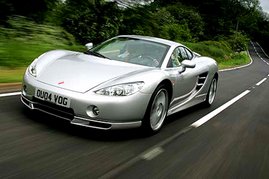
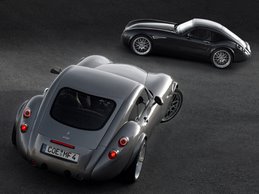
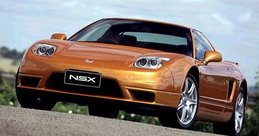
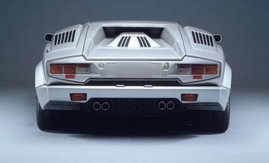

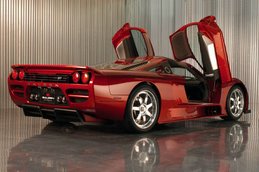
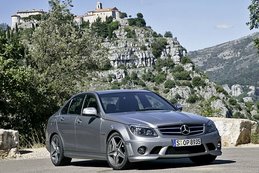
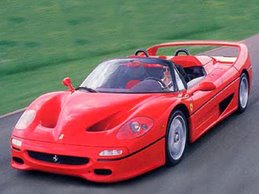

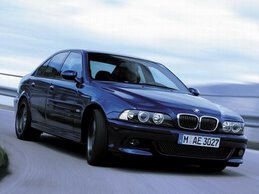



1 comment:
Very nice post. Couldn't find a better article on Isdera. I've been in love with that company since driving the commendatore in nfs 2 :-)
Post a Comment